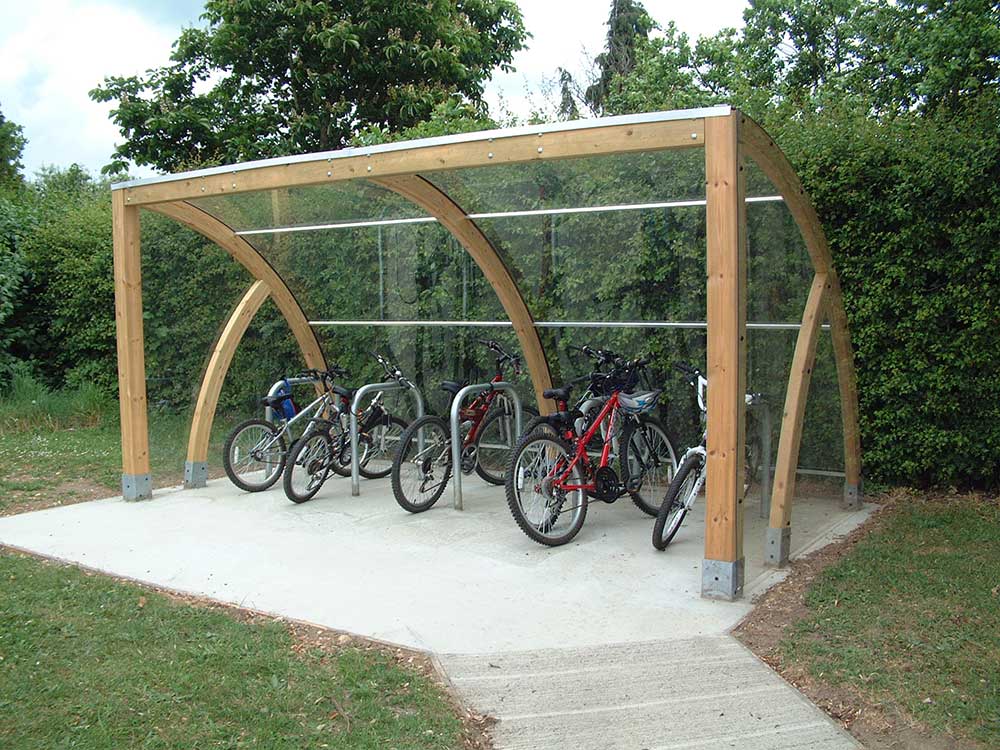
In the pursuit of creating urban environments that are accessible to everyone, it is crucial to consider the needs of all community members, including cyclists. Designing inclusive bike shelters is a significant step towards fostering a more accessible and equitable cityscape. In this blog post, we'll explore key principles and features that can be incorporated into bike shelter designs to ensure accessibility for all riders.
Understanding Diverse User Needs
Universal Design Principles
The foundation of designing inclusive bike shelters lies in embracing universal design principles. Universal design aims to create products and spaces that can be used by people of all abilities, ages, and backgrounds. When applied to bike shelters, this involves considering the needs of cyclists with varying physical abilities, as well as those who use different types of bicycles, including adaptive bikes and cargo bikes.
Accessibility Standards Compliance
Compliance with accessibility standards is essential for creating spaces that cater to diverse needs. Familiarizing oneself with international accessibility standards, such as the ADA (Americans with Disabilities Act) in the United States or similar guidelines in other regions, ensures that bike shelters meet the minimum requirements for accessibility. This includes considerations for ramps, pathways, and designated spaces for individuals with mobility devices.
Designing for Physical Accessibility
Ample Clearance and Pathways
A crucial aspect of designing accessible bike shelters is providing ample clearance and well-defined pathways. This allows cyclists using various types of bikes, including those with trailers or cargo attachments, to move freely within the shelter without encountering obstacles. Furthermore, these clear pathways benefit riders with mobility aids, ensuring they can navigate the space comfortably.
Thoughtful Seating Options
Incorporating diverse seating options within the bike shelter caters to the needs of cyclists with varying physical abilities. While traditional bike racks may not be suitable for all users, incorporating benches or adaptable seating options ensures that everyone can comfortably secure their bikes and take a break if needed.
Enhancing Visual and Sensory Accessibility
Clear Signage and Wayfinding
Effective communication through clear signage is pivotal in making bike shelters inclusive. Large, easy-to-read signs with clear symbols provide essential information about shelter rules, bike parking areas, and emergency exits. This benefits riders with visual impairments and helps all cyclists navigate the space efficiently.
Adequate Lighting
Ensuring proper lighting is a simple yet effective way to enhance accessibility. Well-lit bike shelters contribute to a safer environment for all users, particularly those with visual impairments. Thoughtful placement of lighting fixtures and consideration of sufficient brightness levels are critical aspects of designing an inclusive space.
Technology for Inclusivity
Smart Bike Parking Solutions
Integrating technology into bike shelter design can significantly enhance inclusivity. Smart bike parking solutions, equipped with features like digital displays indicating available spaces and mobile apps for real-time information, benefit all cyclists. These technologies are particularly helpful for individuals with cognitive disabilities or those who may require additional assistance in navigating the bike shelter.
Charging Stations for Adaptive Bikes
As the popularity of adaptive bikes, such as electric-assist bikes or handcycles, continues to rise, providing charging stations within bike shelters is a forward-thinking approach to inclusivity. These stations ensure that riders with adaptive bikes can conveniently charge their devices, promoting accessibility for a broader range of cyclists.
Designing inclusive bike shelters is an integral part of creating accessible urban spaces. By adhering to universal design principles, complying with accessibility standards, and incorporating thoughtful features, we can ensure that bike shelters cater to the diverse needs of all riders. Whether on two wheels or utilizing adaptive devices, everyone deserves a safe and welcoming space to park their bikes. Embracing inclusivity in bike shelter design is not just a step towards accessibility; it's a stride towards a more equitable and vibrant city for all.






